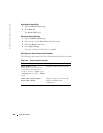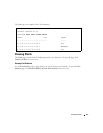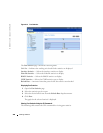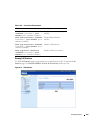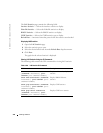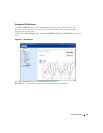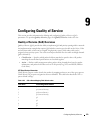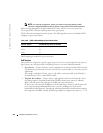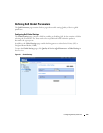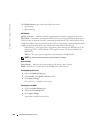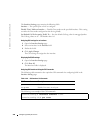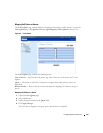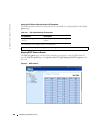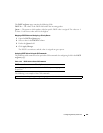
374 Configuring Quality of Service
www.dell.com | support.dell.com
NOTE: In a stacking configuration, Queue 4 is used for forwarding stacking traffic.
Therefore, assigning additional traffic to Queue 4 may interfere with traffic forwarding.
Packets arriving untagged are assigned a default VPT value, which is set on a per port basis.
The assigned VPT is used to map the packet to the egress queue.
DSCP values can be mapped to priority queues. The following table contains the default DSCP
mapping to egress queue values:
DSCP mapping is enabled on a per-system basis.
CoS Services
After packets are assigned to a specific egress queue, CoS services can be assigned to the queue(s).
Egress queues are configured with a scheduling scheme by one of the following methods:
•
Strict Priority
— Ensures that time-sensitive applications are always forwarded. Strict Priority
(SP) allows the prioritization of mission-critical, time-sensitive traffic over less time-sensitive
applications.
For example, under Strict Priority, voice over IP traffic can be prioritized so the IP traffic is
forwarded before FTP or e-mail (SMTP) traffic.
•
Weighted Round Robin
— Ensures that a single application does not dominate the device
forwarding capacity. Weighted Round Robin (WRR) forwards entire queues in a Round
Robin order. All queues can participate in WRR, with expect SP queues.
SP queues are serviced before WRR queues. If the traffic flow is minimal, and SP queues do
not occupy the whole bandwidth allocated to a port, the WRR queues can share the
bandwidth with the SP queues. Ensuring the remaining bandwidth is distributed according to
the weight ratio. If WRR is selected, the following weights are assigned to the queues: 1, 2, 4, 8.
Table 9-108. DSCP to Queue Mapping Table Default Values
DSCP Value Forwarding Queue Values
0-15 q1 (Lowest Priority)
16-39 q2
40-63 q3



